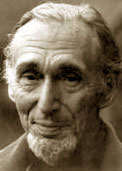Hugh Brockwill Ripman

Hugh Brockwell Ripman was a leader of the Gurdjieff Society of Washington D.C. starting from 1948 until his death in 1980. His work was continued by his wife, Mildred Ripman, until her decease in 1997. Ripman studied with Ouspensky starting from 1934. After the latter’s death in 1947 Mme. Ouspensky suggested Ripman to meet Gurdjieff, which he did in 1948. Throughout his life Ripman took an independent course of spiritual search, being heavily influenced by Gurdjieff and Ouspensky in his own personal spiritual practice. He maintained friendship with Jeanne de Salzmann and with the New York Foundation. He also developed connections with spiritual seekers and guides in other traditions.
Ripman was born on April 16, 1909. As a boy he was a pedantic schoolboy, intent more on studying and reading books than on playing games. His interest in philosophy, psychology, physics and poetry developed at an early age. He discovered Ouspensky’s writings in 1933, and immediately became fascinated with them. His friend invited him to hear Ouspensky’s lecture in 1934, which is how he met the philosopher and join his London group the same year.
In the group he met Mildred E. Geiger, an American working in London, whom he married in 1939. During World War II they stayed in England, then joined Ouspensky and his wife in the USA. After the war he became First Secretary to the British Embassy in Washington D.C., then worked for the World Bank in assisting in the economic reconstruction of Germany and Japan. He stayed in Washington at the job until he retired in 1972.
After Ouspensky’s death, Ripman continued to study with Madame Ouspensky and to practice the ideas he was taught, visiting her at the Work House in Mendham, New Jersey. When Madame Ouspensky counseled her pupils to meet with Gurdjieff, he was one of those who responded. Ripman met Gurdjieff in New York in the winter of 1948 and began studying with him then. He considered Gurdjieff as well as Mr. and Mme. Ouspensky to be the three central influences on his life.
After his meeting with Gurdjieff, Ripman began to gather a group of people in Washington to study the ideas, so to spend more time with Gurdjieff when the latter was to visit America next time. However no second visit happened, as Gurdjieff passed away in October 1949. However, the group stayed together and continued to work with his ideas.
Ripman always declared that he wished to accomplish something in his life and to build something which would endure after he was gone. He emphasized a practical approach to his teachers’ ideas from the very beginning, aimed at developing in his students a sense of independence which he possessed naturally. He combined in an organic way intellectual work, spiritual meditation and housework, which, according to Gurdjieff, was an essential part of spiritual work and development.
In 1971 he and his students acquired property of about twelve acres outside Washington D.C., where they built a residence and center for carrying out Gurdjieff spiritual work. He worked very carefully and meticulously with his students, conveying to them the essence of the Gurdjieff tradition and developing in them a sense of initiative, attention to the minutest details of life and responsibility for their actions, and showing them how to use daily life as a teacher by means of acquiring experience from daily-life situations. For his teaching he used a variety of sources besides Gurdjieff and Ouspensky, such as the Bible, the Bhagavad-Gita, Plotinus’ Enneads, Epictetus’ Handbook and Rumi’s Mathnawi. He also brought in the practice of sittings, which he called “collections,” by which he aimed to have himself and his students collect their attention within them and to sense their own presence.
Ripman wrote most of his texts in the 1960s and earlier, for the sake of practical instruction and not for publication. He used his writings as part of his work with his students, reading to them fragments from his texts on appropriate occasions. Ripman’s autobiography, Search for Truth was published in 1999 in honor of the fiftieth anniversary of the Gurdjieff movement in Washington.
His writings do not present his work ideas in a direct way, but rather point to writings of other authors, demonstrating the appropriate ideas, usable for spiritual work, which were well expressed by them. The first section of the book describes Ripman’s individual path of work and the struggles he had to go in overcoming personal difficulties and social obstacles in his self-development and the build-up of his work group. The middle section of the book, titled “Travels and Conversations,” recounts of his travels to the East, which he carried out as part of his job, and his meetings with spiritual seekers and teachers of various traditions. He wrote about his meetings with Sufis, Hindu saints, Taoist priests and Zen masters, using the occasion to make accurate observations about his meetings and to present consistent patterns of questions he asked himself in connection to his meetings, such as: what did he want to learn from these meetings? How to still the mind? How to Live? How to find God? How to control the attention? The third section presents a collection of essays written on various special purposes, in many of which he asks the eternal questions of how to grow spiritually and finds answers to some of them.
Articles:
Hugh Ripman To Give Is to Receive
Hugh Ripman Coming Up Against Life
Hugh Ripman – Public Lecture at Grace Church April 9, 1976
Several quotations:
From Coming up Against Life
I think it is quite a natural thing, but mistaken, to have this idea that the Work is opposed to one’s efforts in life. If you begin to think about it, you will see that, whatever you do, you will do it better when you are awake than when you are asleep. It isn’t a matter of discarding one’s life activities and transferring all the investment in them to the investment in some kind of theoretical work. It is a question of bringing to life’s activities a new kind of attitude, in which they become not an end in themselves but a means to an end. One has to think for oneself carefully about what this means.
From To Give Is to Receive
Truth could live on earth only in men’s hearts. Through the ages, there had always been some men in whom the truth lived. Perhaps this was one aspect of the meaning of life. Perhaps if this living truth died out of the body of mankind, then the whole experiment would be written off as a failure.
***
It was only in this way, if each person in whom a particle of truth were living passed the spark to others, to as many others as he could, that in the end, perhaps centuries or thousands of years from now, the sickness in the soul of mankind might be cured.
From http://www.gurdjieff.org/prehn1.htm
From Search for Truth
And in those moments when I do live, when I experience that other world, when I come to that place in myself where there is peace and freedom and joy in the simple naked act of being, when I rise again from the dead, I know with unshakeable conviction that the price is not important.
http://www.gurdjieff.org/G.6-1.htm
“I saw the whole body of ideas as an enormous diamond. One started by studying the separate facets. Gradually one came to see how they were connected together, both by proximity and by their place in a pattern. But finally one had to penetrate the interior, where one could see at once all the individual facets and the unity of the whole.”






